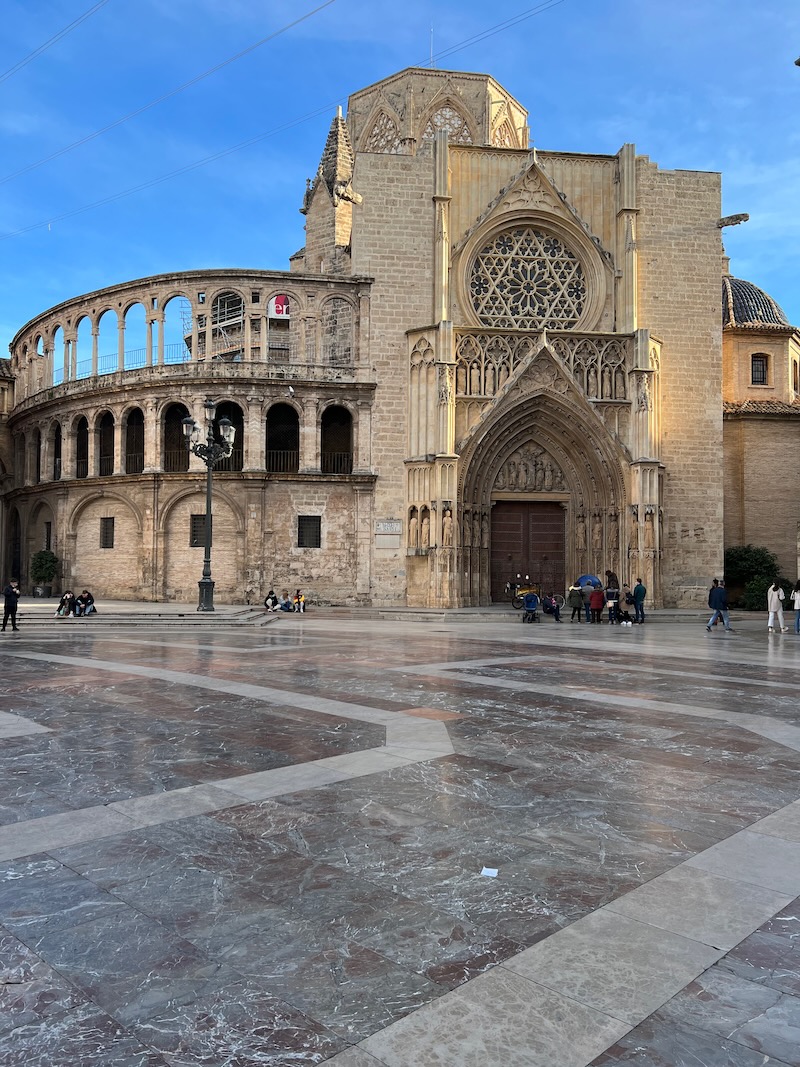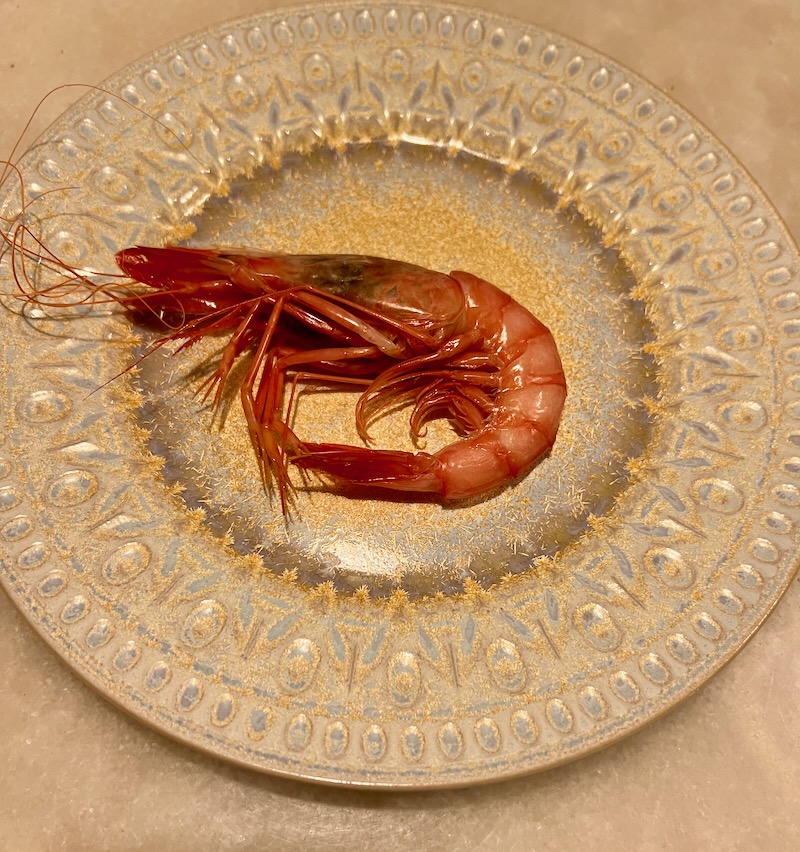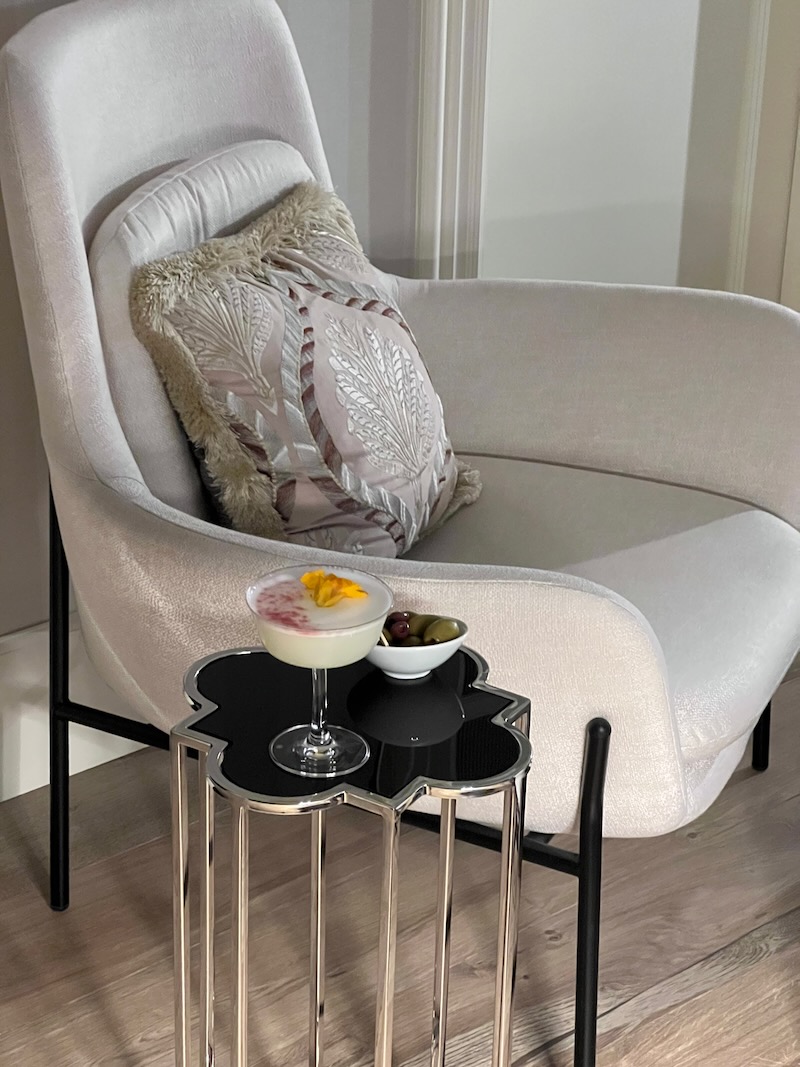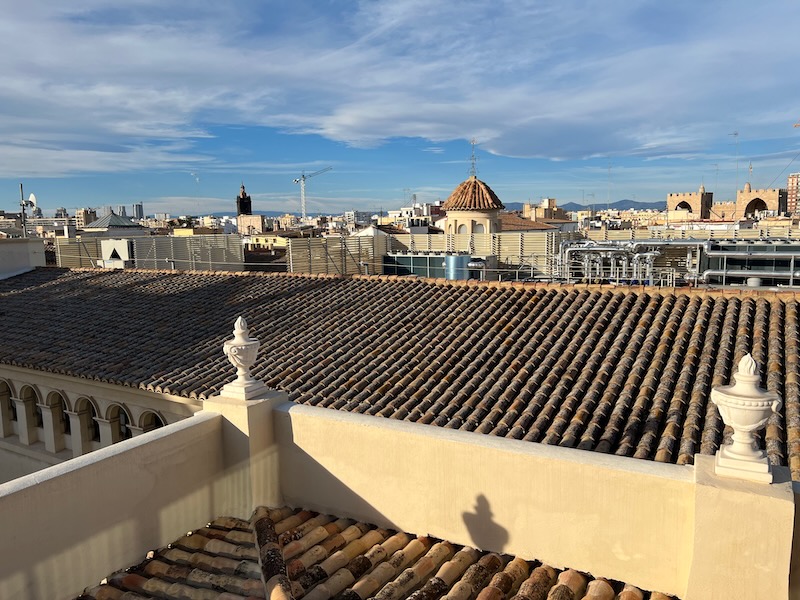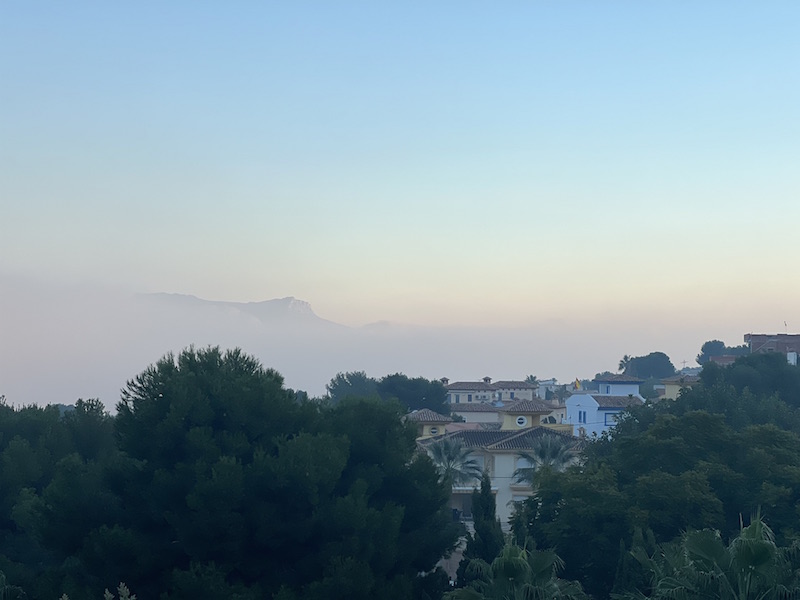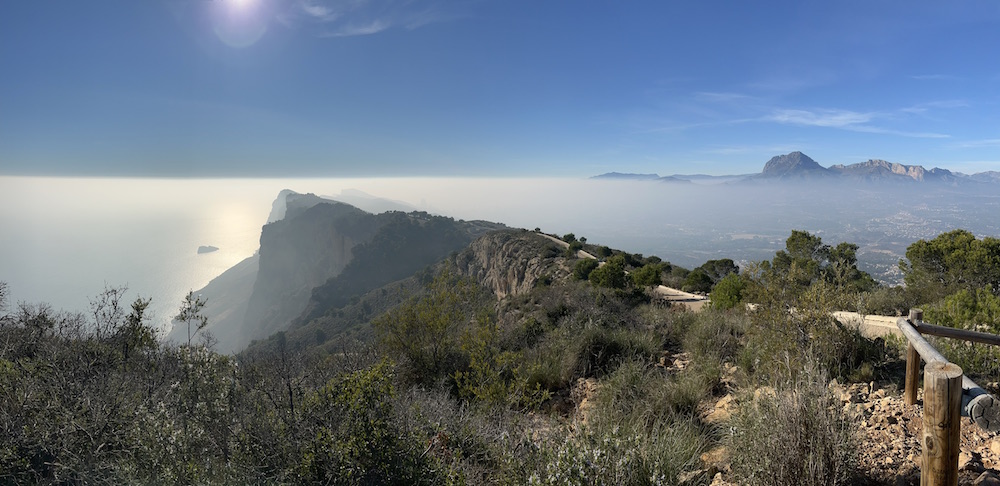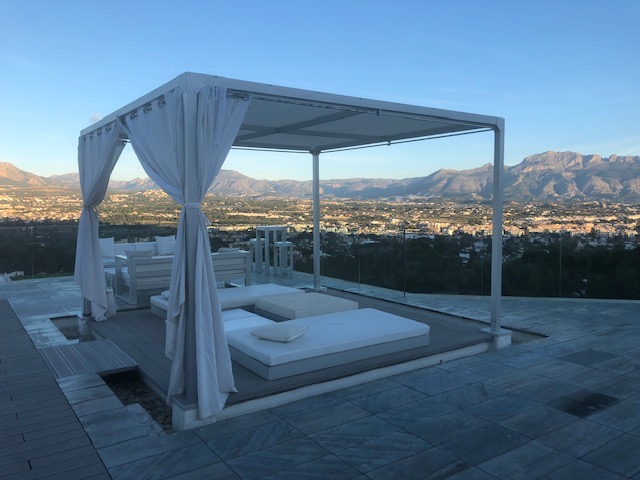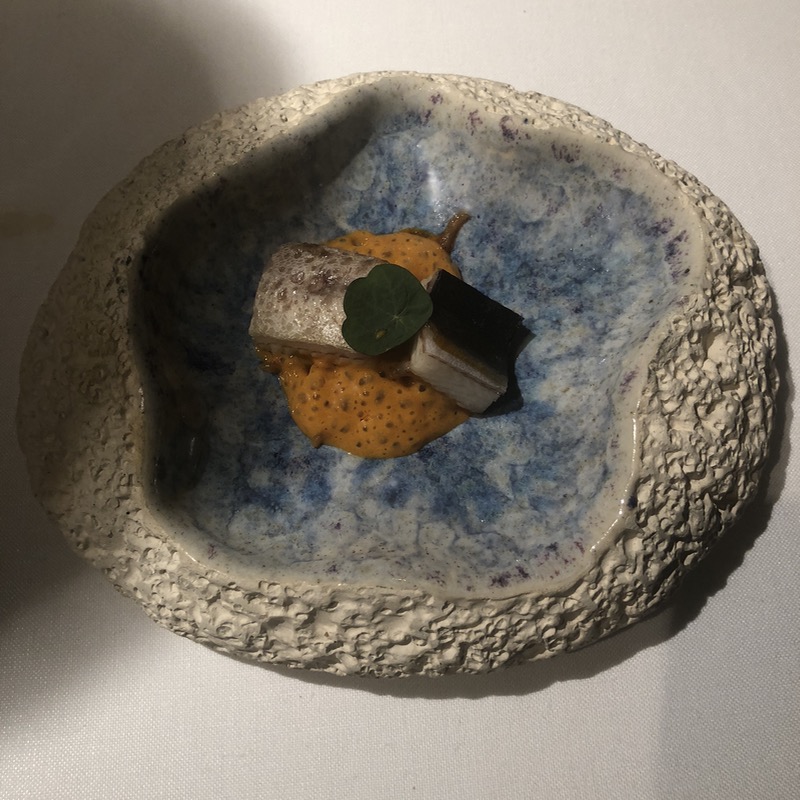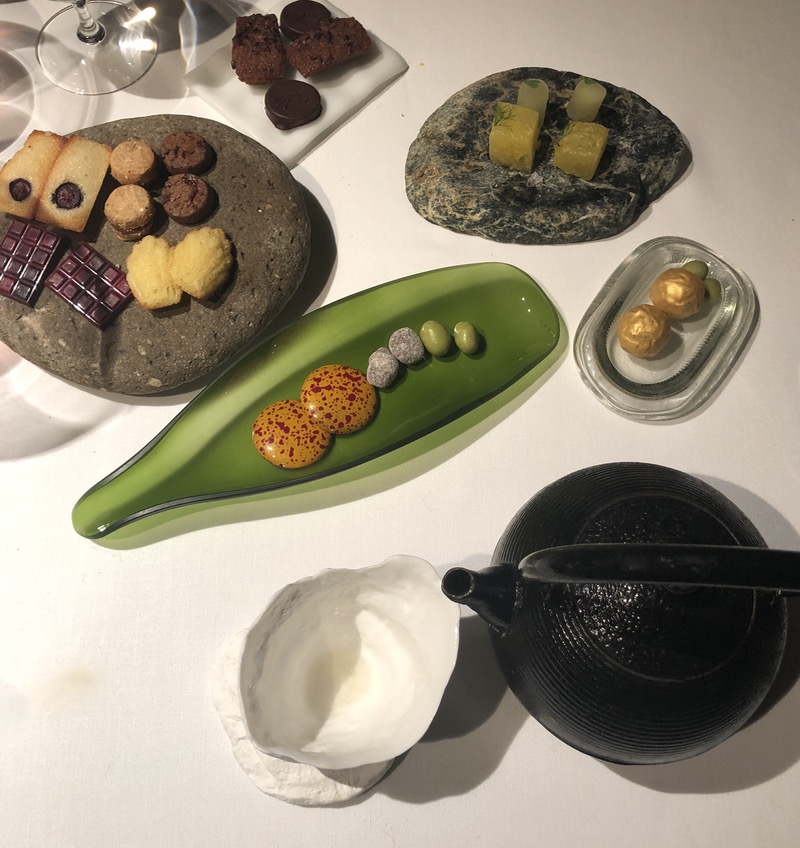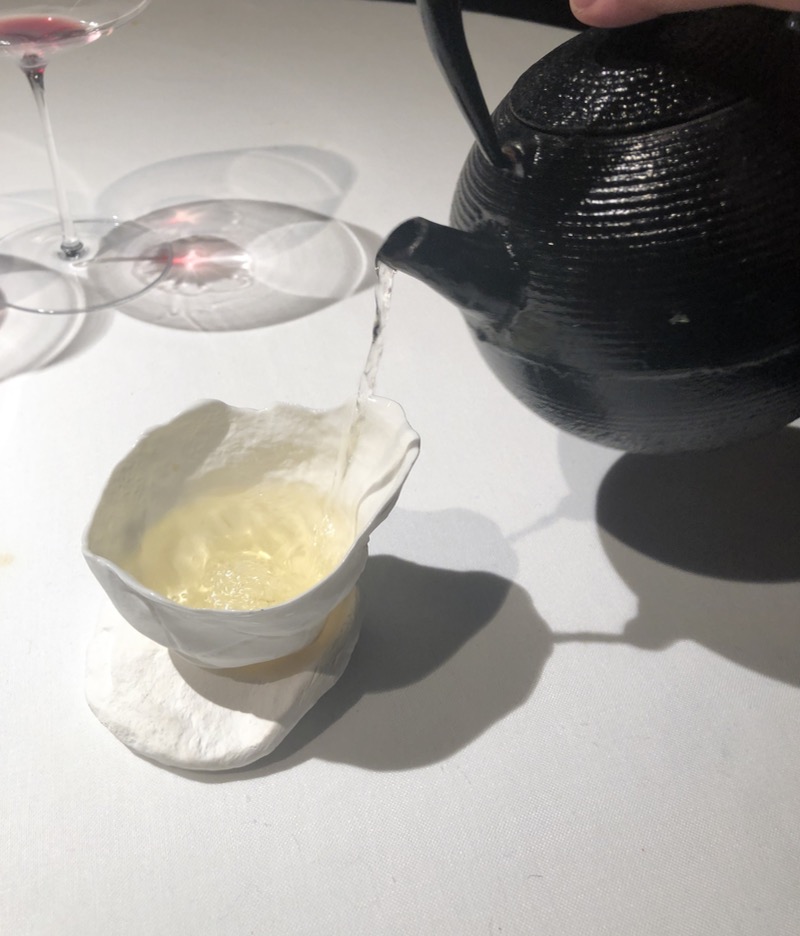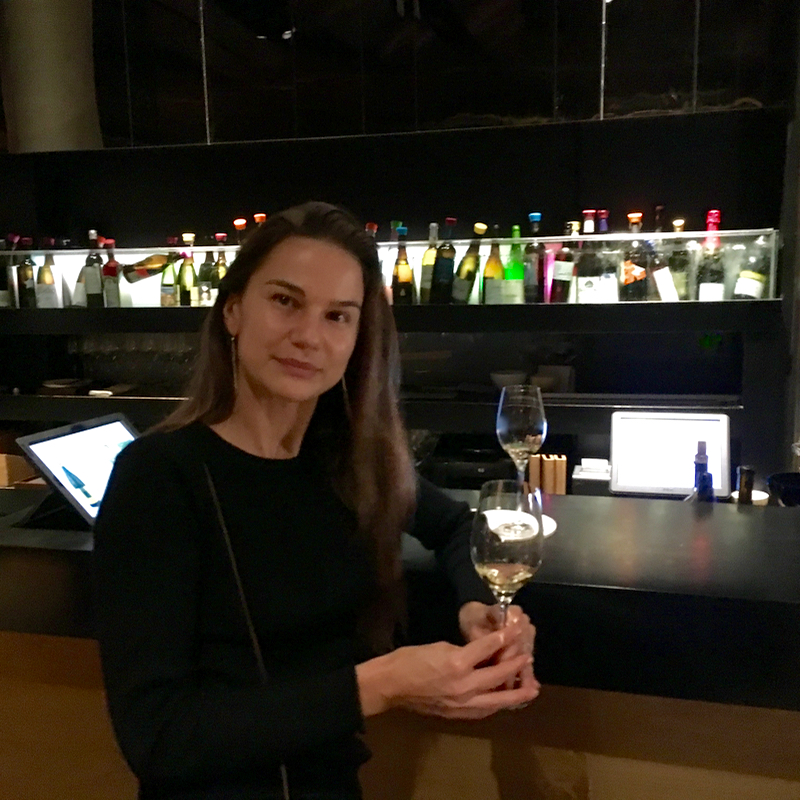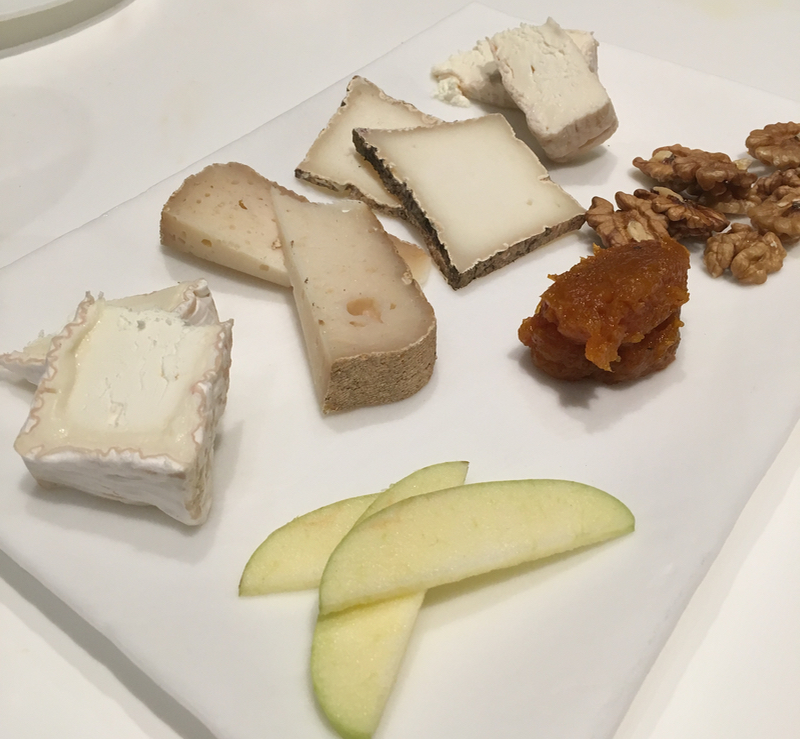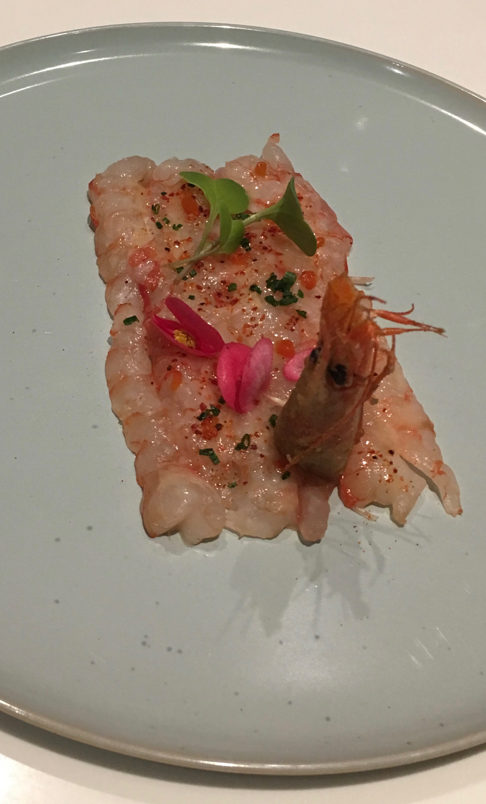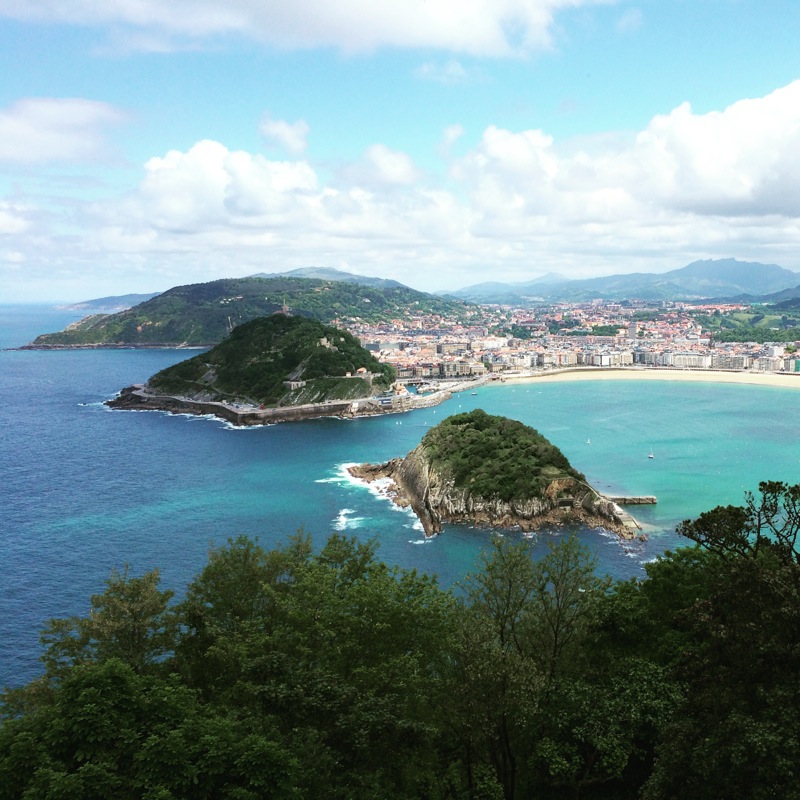Viñátigo winery: quest for distinct climas of volcanic Tenerife
Viñátigo enchants you. Naturally and architecturally. Lush terraces wind upwards around a sunlight-hued chapel to the heavens. Today, like a scarf the frame is caped and wrapped with soft clouds around the cone of what might mythologically become the Olympus of Tenerife. My with bounty stud head turns around, descending around a circular aquifer to the rasta banana plantations scattered through the rocky land to the hanging gorges of Atlantic cliffs. A vista unique to only a few vineyards on the green planet spelled over my well-trod mind. Cacti mingle with verdant bush, cypress, dragon, laurel and pine trees, lichen, wild dandelions and lilies specked with sunrise palette bell flowers — on Tenerife the high desert meets the lower pockets of humidity and a fertile soil. Literally, a heart and mind twisting setting.

Tenerife’s eternal spring is paradise above the hell of a volcano
There are over 400 years old vines on Tenerife. Never plundered by the vicious phylloxera like the European mainland, this island on latitude bordering Morocco and Western Sahara, rather unexpectedly promises climate-resistant wine production. Facing global warming if you want to grow new vines on Tenerife, you need to go high in altitude about 400 m and a bit more where the climate conditions are still freshly assisted by the trade winds.


Together with just a handful of other local wineries, Viñátigo helms the mast in exploring the broad potential of the diverse terroir on the volcanic island. The Spanish keyboard calling name comes from the ancient trees in the Laurisilva native forests on Tenerife. This evergreen laurel thrives in humid conditions with mild climate. Like their northern neighbour Madeira, the Canaries nest in the eternal spring conditions. The naturally diverse landscape on Tenerife can stretch almost a 20 degrees celsius difference in temperatures between the sun basking southern shores and the soaring northern forests.


El Teide, the mighty volcano reaches through the clouds almost to 4.000 m above the Atlantic shores. The giant crowns the jagged landscape of the largest of the Canary Islands. Spain’s loftiest peak, its desert-like, almost extra-terrestrial surrounding landscape was shaped by the eruptions, last over a century ago in 1909. The volcanic setting blessed the challenging island with a fascinating geology (map bellow).

Save the vines and find the balance: biodiversity and sustainability
The island’s distinct microclimates battered by the Atlantic trade winds from subtropical through Mediterranean to pre-alpine in the altitude stir the agriculturally curious to plant anything from avocados, bananas, papaya, passion fruit to a broad assortment of potatoes, including the ugly little spurts of volcanic rock resembling local black potatoes.
Many old vines in private hands are being replaced by avocado and banana plantings because of economical advantage and EU subsides. These crops require 150 l of water weekly. On an island with no river and a scarce supply of rain over recent years this unsustainable replanting needs to be addressed urgently. In comparison a grapevine needs around 600 l per year! The only sources of water being either desalination, underground or collected rain water in the omnipresent aquifiers on Tenerife, therefore viticulture seems like the most suitable option to keep going.
Viñátigo’s identity is about working only with the local grape varietals regeneratively and defending the typicity of the north face of Tenerife.

Natural and manmade challenges
The humidity up to 85% practically every day complicates viticulture on Tenerife so biodynamic approach exposes the vines vulnerably to the spread of mildew. It is possible to make biodynamic wines as our tasting at Bodega Marzagana in Orotava approved in their reds (the whites were a bit funky), yet it requires very small holdings where precise attention can be maintained.
Viñátigo uses biodynamic compost. Its man in charge of the viticulture confides “I am feeling myself more comfortable working with organic and regenerative methods. First regenerating the soils worked by herbicides and pesticides during a long time. If this works, we can start to understand better our place.” On their own vineyards as well as the vine growers they work with farm organically always on the north face of the island.

Vines are grown all over the island, but mainly on the Northern shore the cooling trade winds and altitude support freshness in the wine. Most of the vineyards have been in the hands of families for generations and the wine was made only for at home consumption. The quality has shot up and the growing export numbers confirm global competitiveness of Tenerife wine. Thumbs up to the recent swell of well educated youths from the island, who passionately pour their hearts and savvy minds into the local soil.

One Family’s Imprints on and Above the Soil
One of them is Jorge Méndez from Viñátigo (the map above shows the winery’s current vineyards). The Spaniard with genealogy spanning half of the Western Hemisphere (the Canaries were an important trading centre between the Americas, Europe and Africa) is the third generation of his vine growing family who now directs the viticulture operations. He makes all the single vineyard wines, plus experiments with some techniques not as typical locally, but as our tasting revealed, oxidative style can delightfully highlight the nuances of the local saline white varietals such as Vijariego Blanco. Not part of the Viñátigo portfolio, he has made Xercos by himself since 2020. I hope he perseveres.
Jorge’s grandfather planted the pergolas perching on the steep, terraced slopes under a chapel’s protection from the titan towering behind, the Teide. The marks of three generations are rather distinct. His father Juan Jesús Méndez had built the winery cut into the hillside at the end of 1980’s, naturally endowing it with gravity winemaking and cooling. Local rocks were used in the construction. Jungle-like, sprawling greenery accompanies you while descending the helix-shaped staircase inside.

Being a small-medium family winery is not easy or as romantic as it may seem. Jorge credits the Méndezes success to “a fluent communication so you can work in the right way with your family. Now we are running together in the different departments.” He also used to travel representing the winery in the export markets, mainly to Canada, Belgium, and even the Maldives. They also export to the UK, ever expanding their reach.

Survival of the Fittest Tested Wines by Viñátigo
There are at least 24, but potentially over 80-100 indigenous ungrafted vitis vinifera varietals on the Canary Islands. According to Jorge, Vijariego Blanco has the greatest potential because of the great, elegant and beautiful acidity. Probably the ideal white varietal for climate change on Tenerife. Negramoll in the reds because of the elegance and juiciness of the grape.
Viñátigo now makes about 27 different wines. Jorge intends to narrow it down. The wise know the importance of focus. The other most popular white wines are Listán Blanco (also known as Palomino), aromatic Malvasía and Moscatel, Gual, Albillo Criollo, Marmajuelo and Verdello. To me and my sommelier sister, the most interesting were the mineral salinity showing wines made from the single varietals and vineyards. Such as Maipé de Taganana (from a marvellous rocky Taganana village vineyard in the Anaga Park where we hiked) and Laderas de Teno (mountain region called also the Machu Picchu of Tenerife) single vineyard wines.
Jorge shared an incredible story: “The word Maipé comes from malpaís, which refers to a lifeless piece of land covered by lava after a volcanic eruption. This specific place was covered by a landslide. The vineyard was buried by a landslide of El Monte de las Vueltas around 1920, leaving the once bountiful vineyard worthless. Over the decades, the old vines of Listán Blanco have emerged writhing from beneath the voluminous rocks that buried the vineyard a century before.” Survival of the fittest once again proves how struggle can make the most intriguing wines. At an altitude of 350 meters above sea level, this vineyard is protected from the direct influence of the Atlantic Ocean, but it still receives the north-eastern breeze of the Trade Winds. Blessed.
Our trained taste buds were onto something. The soils in the Anaga and Teno’s Massif are one of the oldest geological soils on the island. The high degree of erosion here adds structure to the wines.


They also make a few rosés and wonderfully light reds from the juicy Listán Negro, Vijariego Negro, Baboso Negro, Negramoll and Tintilla grapes. These are like the whites also blended. We spotted also sparkling pet-nat bottlings in white and red at Sibaris gourmet wine shop in La Laguna where we bought our first bottle of Viñátigo from the Lomo de la Era vineyard.
While viticulture arrived with the colonising Spaniards and the Portuguese in the 15th century, the most distinct vineyard feature — the braided vine called cordón trenzado — is unique to Tenerife. This traditional training of the stem and branches in the Orotava Valley protects from the whimsy winds and the soil’s absorption of the summer heat.

In the winery we tasted with Jorge straight from the cement vats, clay eggs and neutral oak barriques used for the maturation of the wines. New seedlings were just being planted on the side of the winery facing the ocean.

Jorge Méndez studied Agricultural Engineering, later he obtained a master degree in Viticulture and Enology at Universidad Politécnica de Madrid, where he also worked in the Viticulture Departament studying the effects that climate change can have on the wines in Spain across viticulture decisions. A very useful experience facing today’s challenges. He made harvests in Argentina, Burgundy and Chile before returning to his family’s winery.


I further asked him what are the most unique qualities of Tenerife vineyards beyond the diversity of altitude and the generally volcanic soil?
There is a marked smallholding culture on the island where the mix of plots and soils is key in the search for identity. Thus, the different plots where we grow the grapes have different types of volcanic soil depending on the type of eruption and the geological era. From very young soils, that can be 20-25.000 years, that geologically it means nothing, to very old soils, like Anaga and Teno parts, that emerged from the deep ocean and are more than ten million years old.
In terms of climate, the north face of all the Canary archipélago islands enjoy the influence of the trade winds from the north pole being caught by our big volcanoes and hills, creating a cloudy and fresh north face conditions that give us the possibility to have thriving agriculture next to Sahara dessert. At the same time these winds can give to the wines this salty and savoury part.
All these attributes and the resulting wines whetted my palate for more Tenerife wine. Certainly, I will keep my eyes open seeking them more on the wine lists. The Northern side of the island is so wildly beautiful, and I recommend anyone loving hiking, surfing, wine to visit.















